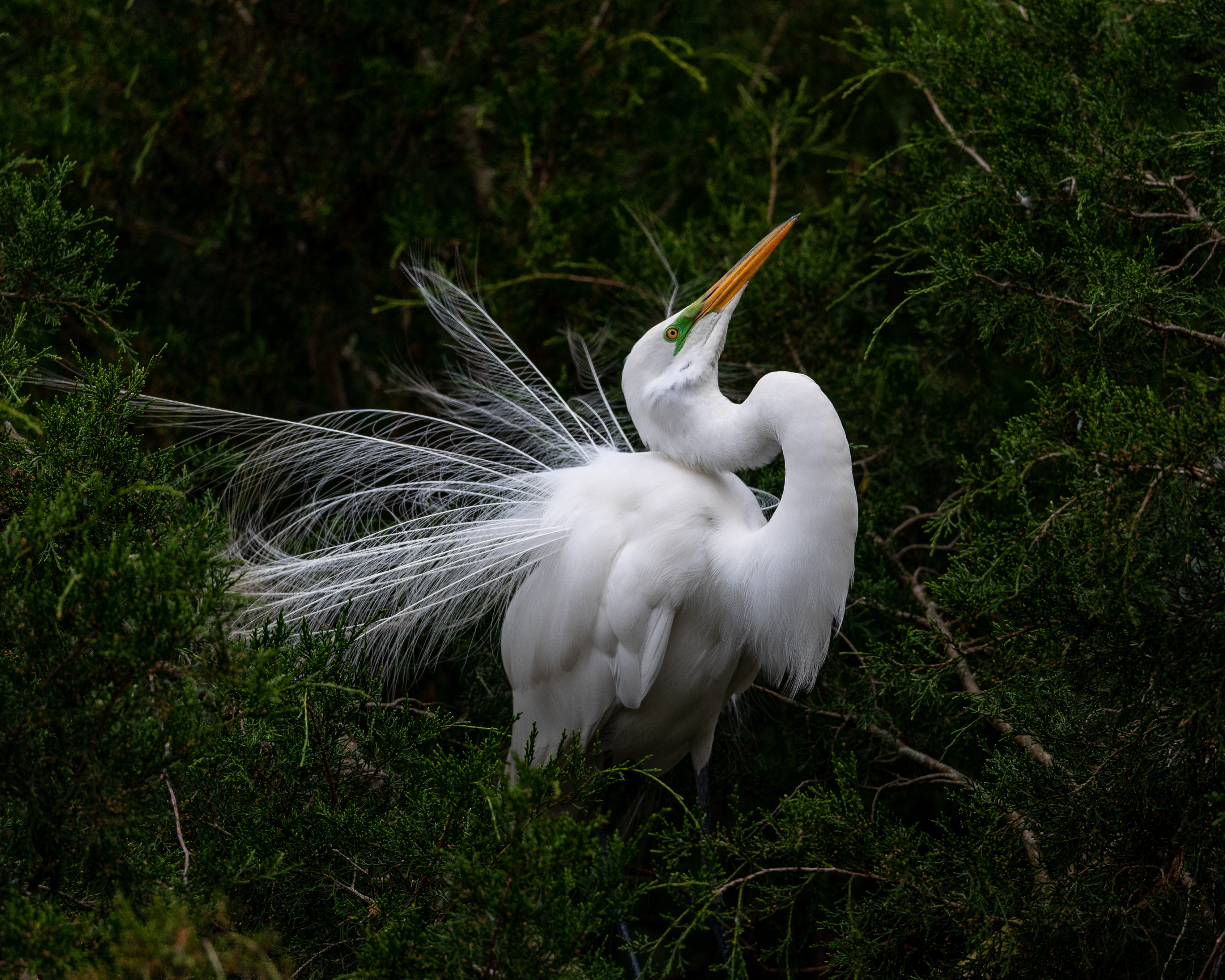Spring break presented the perfect opportunity for a memorable bird photography expedition with my daughter and my wife. During March 7 to March 14, 2025, we embarked on a journey to two renowned birding destinations: Magnolia Plantation and Gardens in Charleston, South Carolina, and Fort De Soto Park near Tampa, Florida.
Magnolia Plantation and Gardens: A Haven for Nesting Birds
Our adventure began with a five-hour drive to Magnolia Plantation and Gardens, a historic site celebrated for its rich biodiversity and captivating landscapes. The Audubon Swamp Garden within the plantation is particularly famed for its vibrant birdlife, especially during the spring nesting season. The Long White Bridge at Magnolia Plantation was built around 1840, and leads visitors to more magnificent gardens.
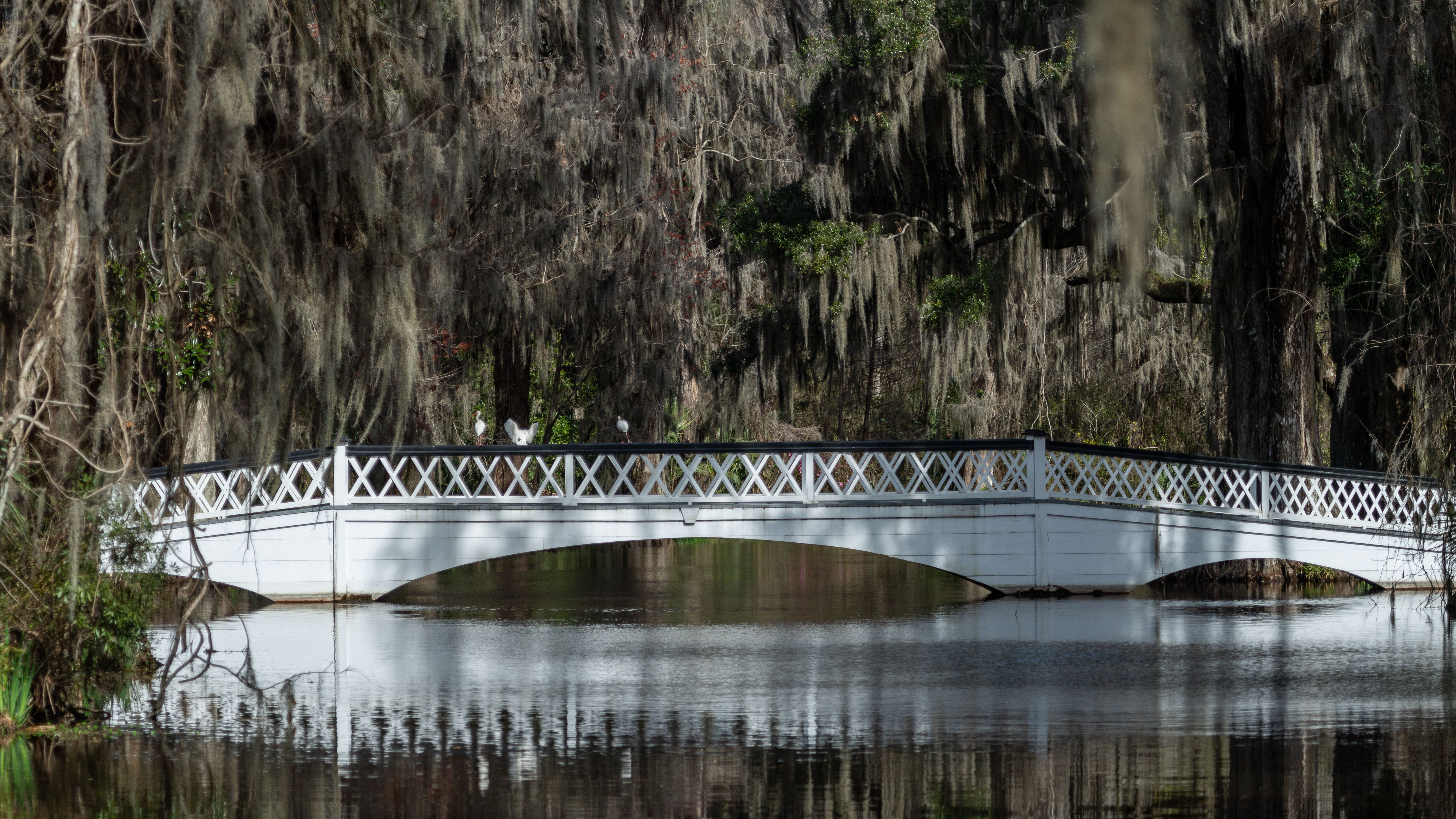
Before crossing the iconic Long White Bridge, we were treated to the sight of a White Ibis gracefully flying by. Its distinctive silhouette against the backdrop of the lush greenery added to the enchantment of the moment.
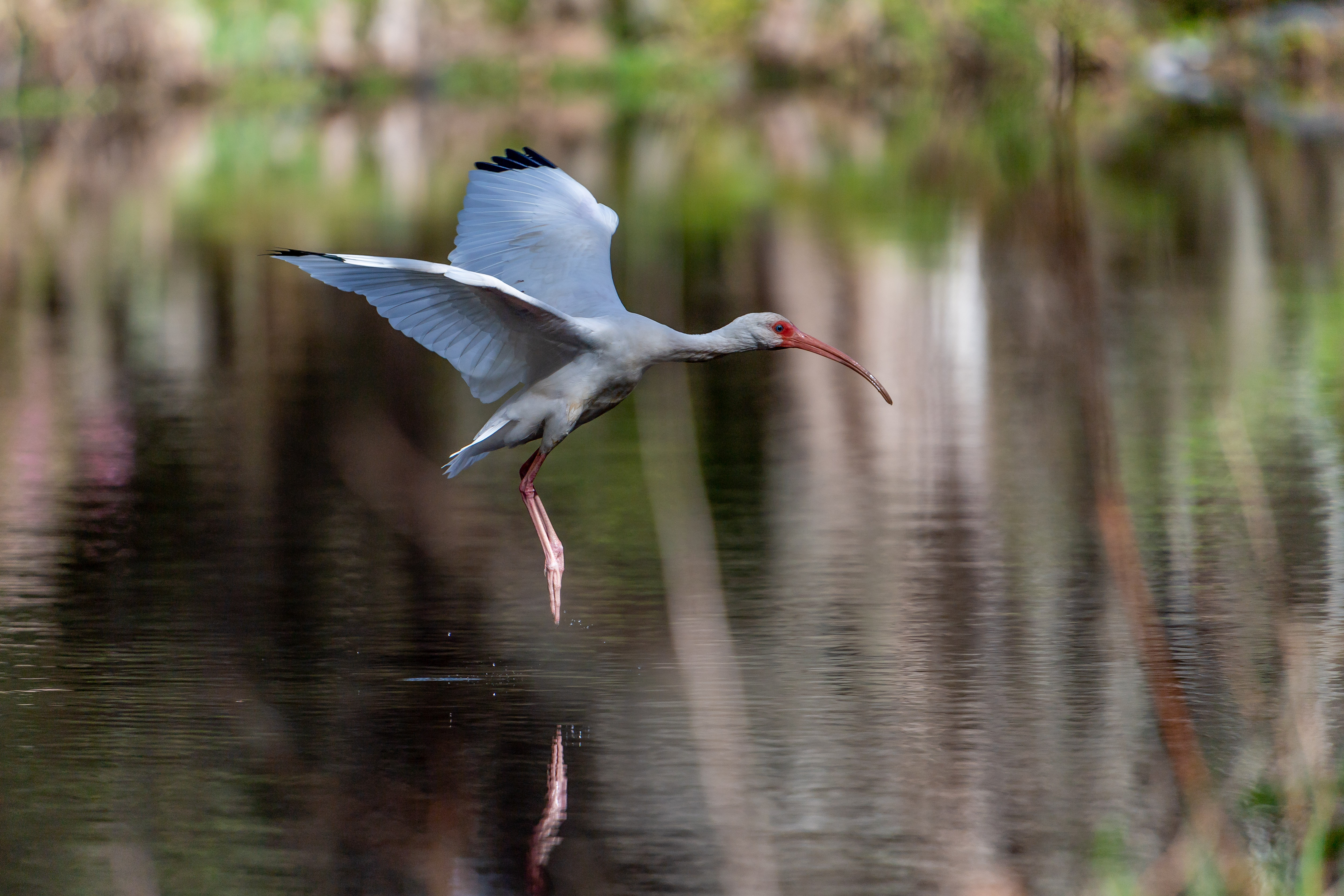
A particularly memorable moment was witnessing a Great Blue Heron struggling to swallow a snake. The heron's persistence and the snake's attempts to escape created a dramatic scene that highlighted the rawness of nature. Such encounters remind us of the intricate food chains and survival strategies present in these ecosystems.
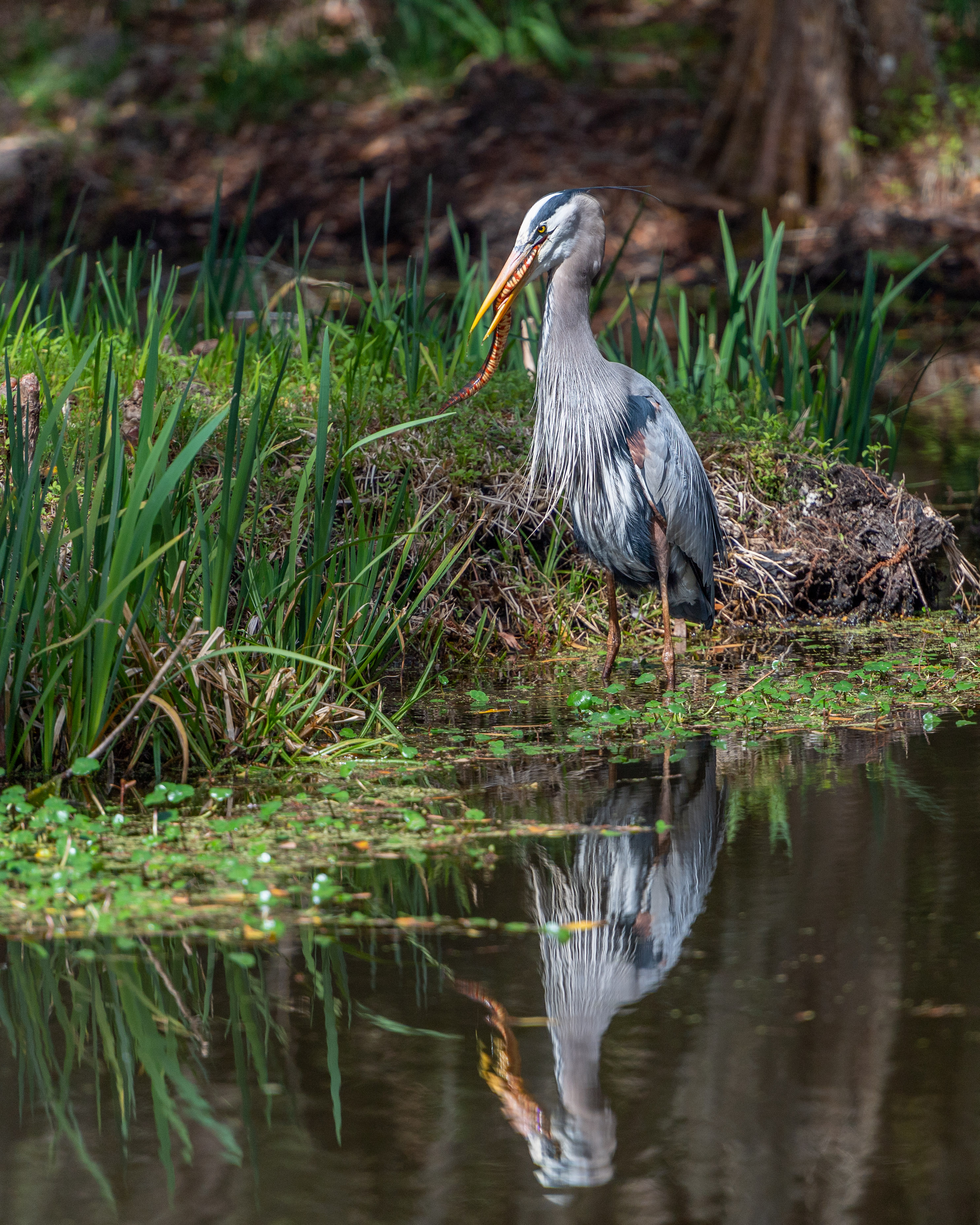
As we ventured into the swamp, the air was alive with activity. Great Egrets, adorned in their resplendent breeding plumage, were diligently attending to their nests. The sight of these elegant birds, their feathers illuminated by the gentle sunlight, was truly mesmerizing. We were fortunate to observe several nests with eggs, a testament to the thriving avian community.
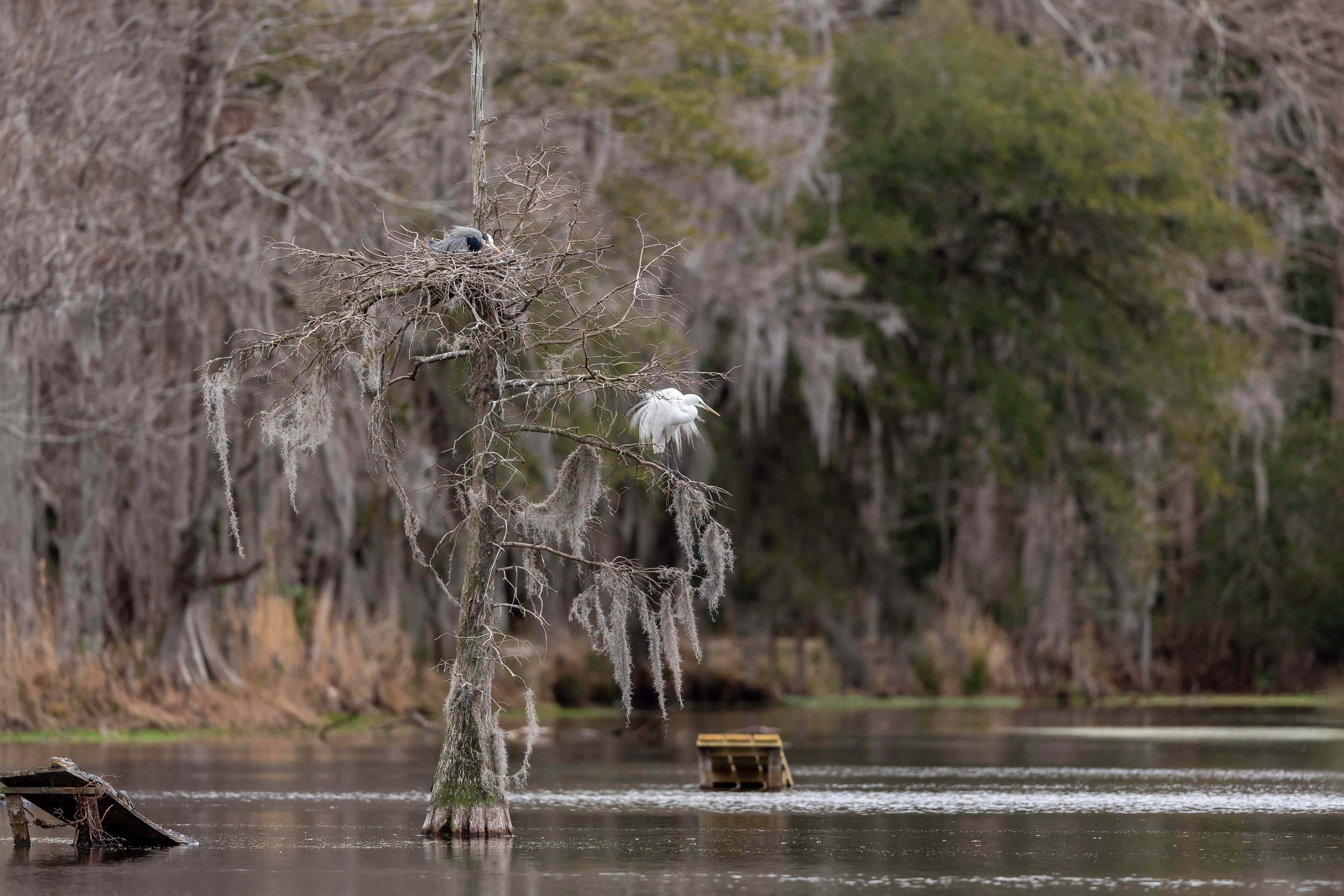

Anhingas, often referred to as "snake birds" due to their swimming posture, were another highlight. The males, showcasing striking breeding plumage, perched gracefully on branches, flying around, their feathers shimmering with iridescent hues. Capturing these moments against the backdrop of the lush swamp was a photographer's delight.
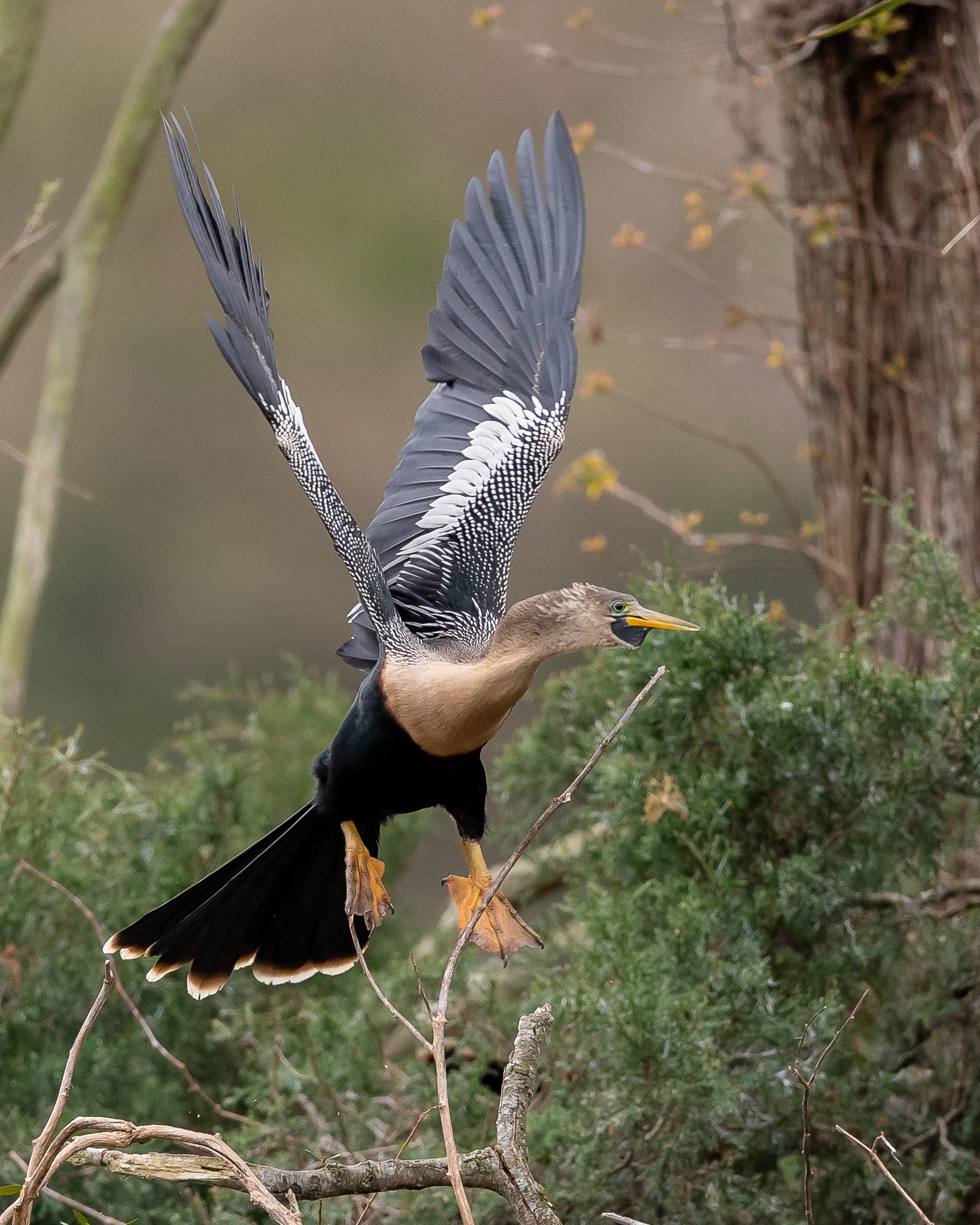
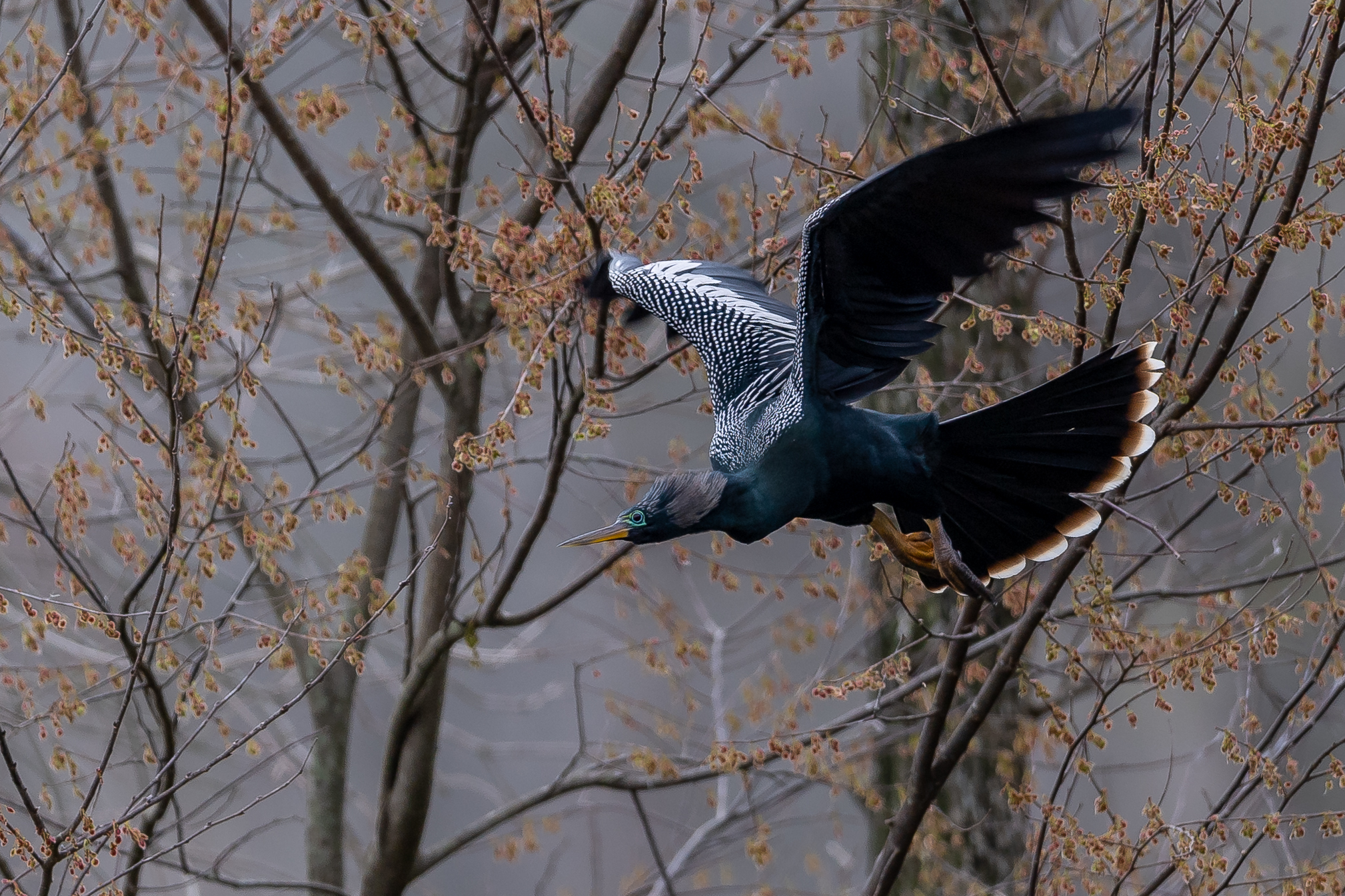
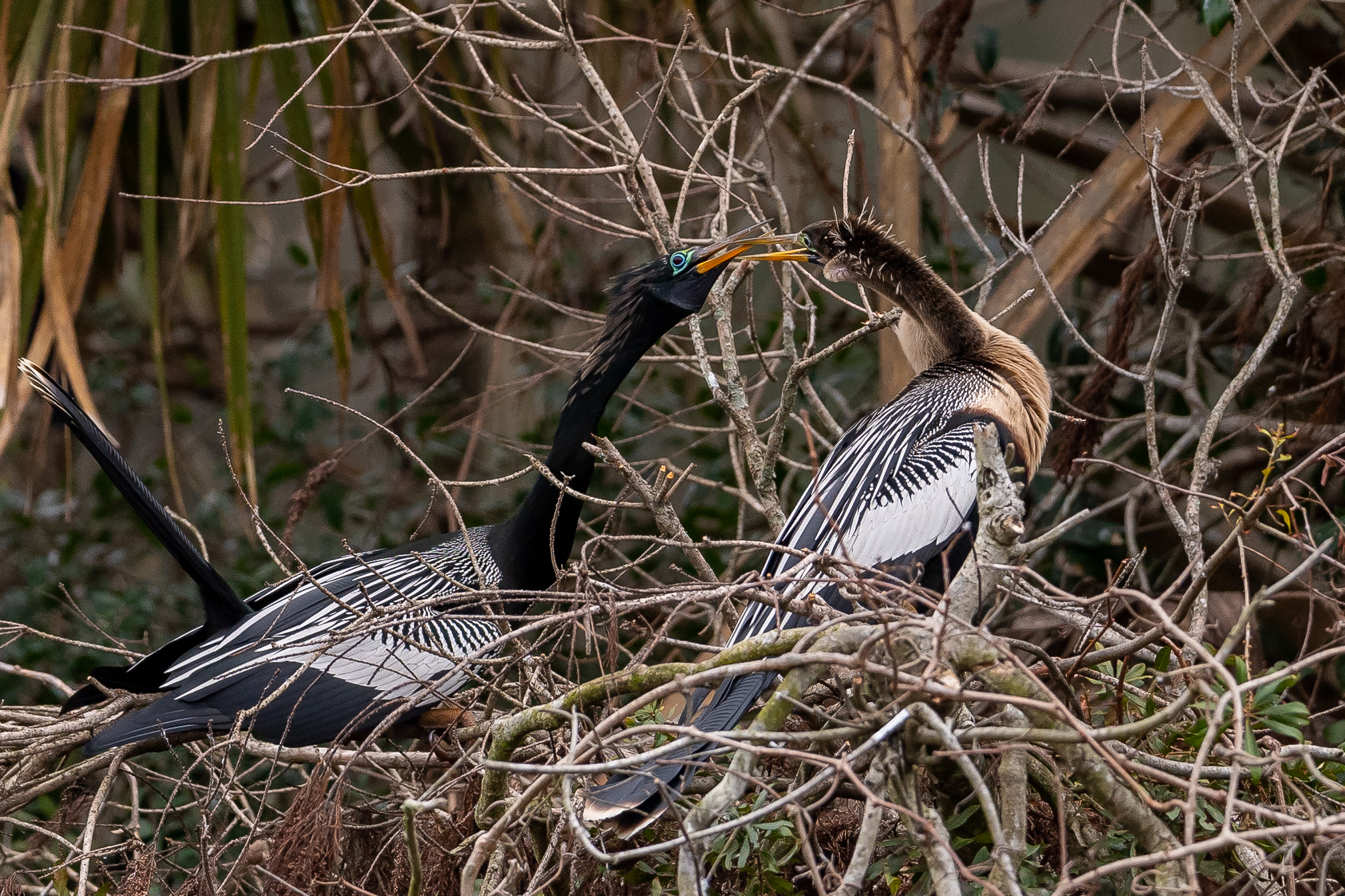
Fort De Soto Park: A Sanctuary for Wading Birds
Our next destination was Fort De Soto Park, a gem nestled along Florida's Gulf Coast. Spanning over 1,100 acres, the park's diverse habitats—beaches, mangroves, and wetlands—make it a paradise for bird enthusiasts.
Upon arrival at the beach, we were greeted by a delightful array of shorebirds. Piping Plovers scurried along the shoreline, their pale plumage blending seamlessly with the sandy backdrop.
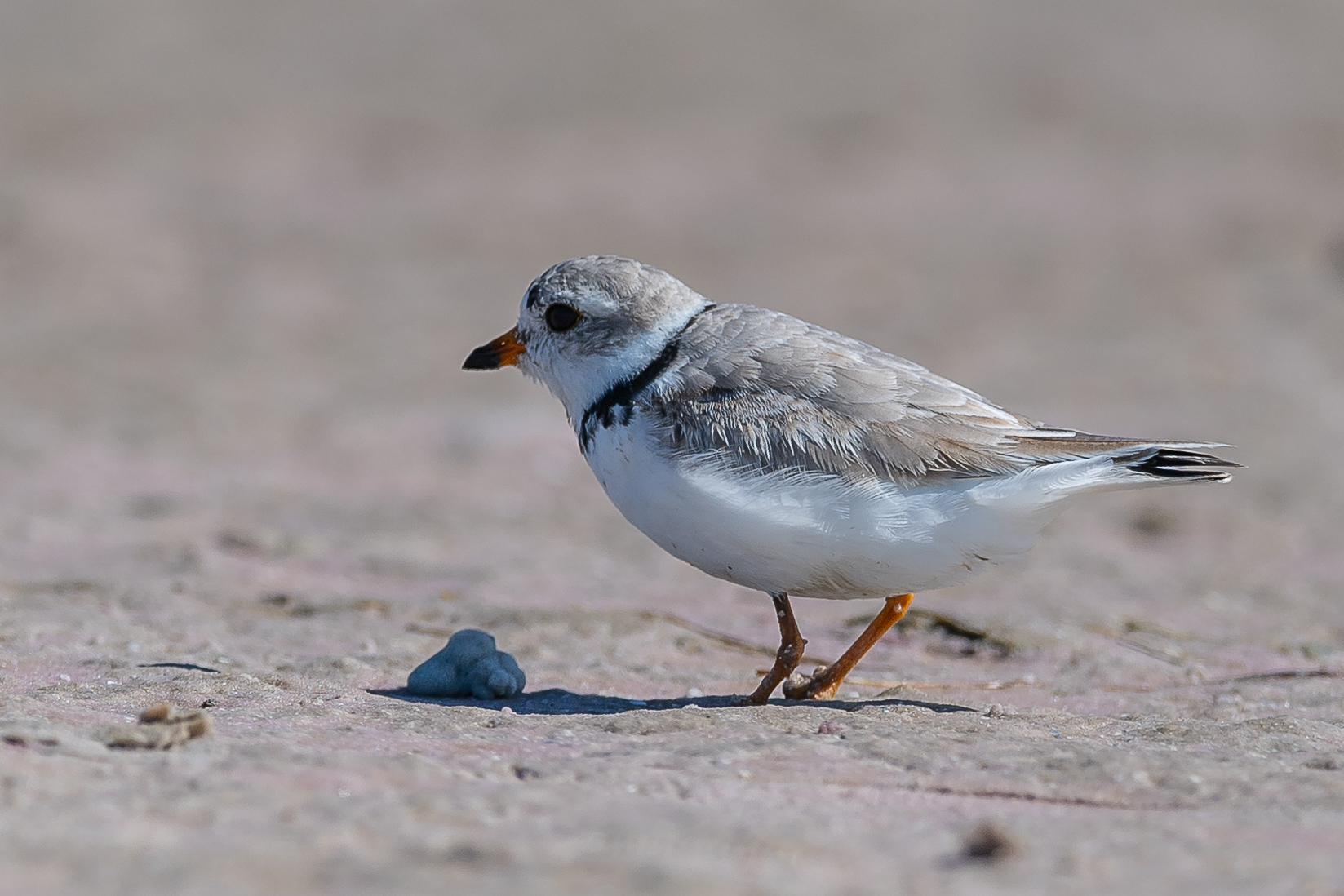
Sanderlings and Sandpipers foraged energetically at the water's edge, their swift movements creating a mesmerizing dance
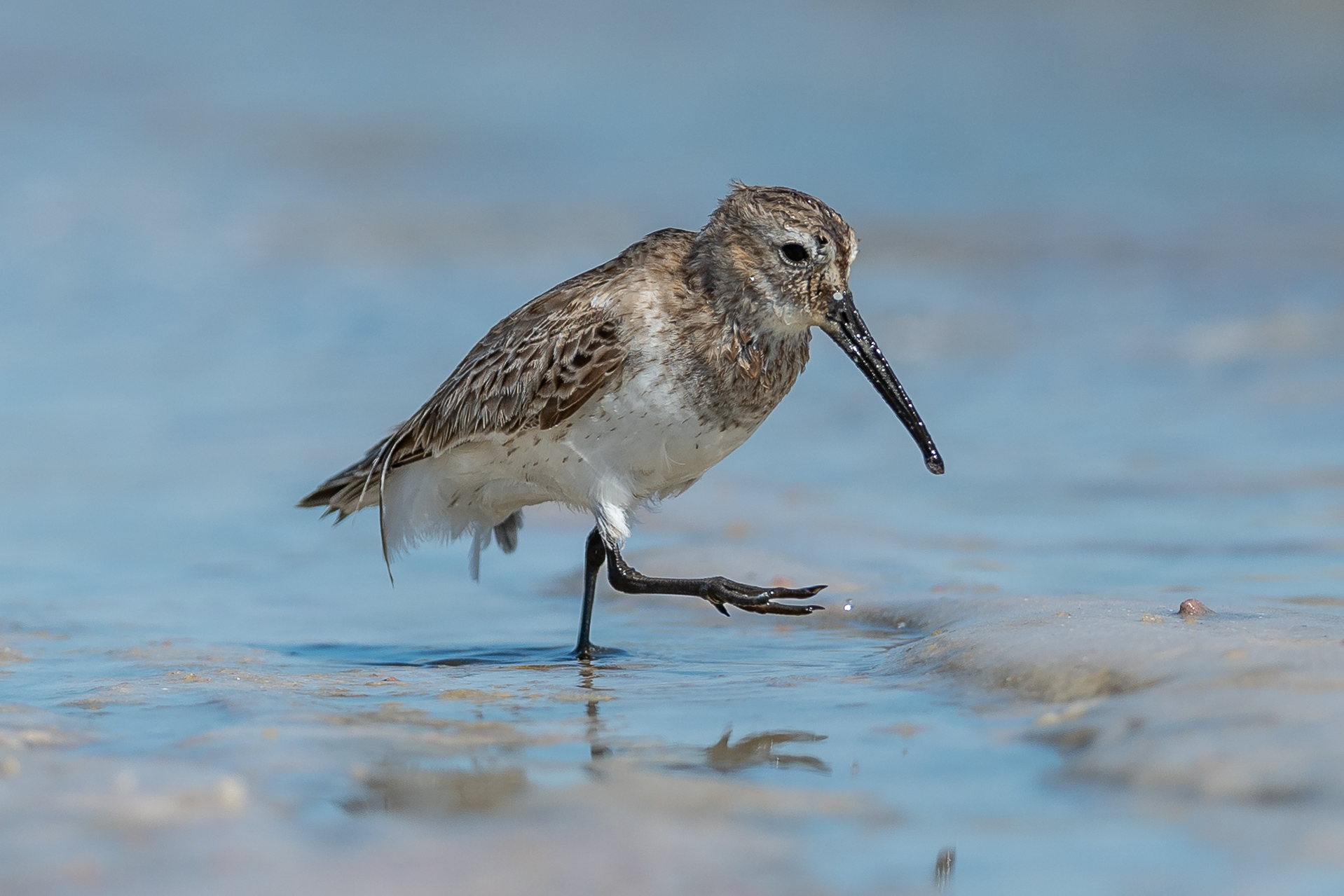
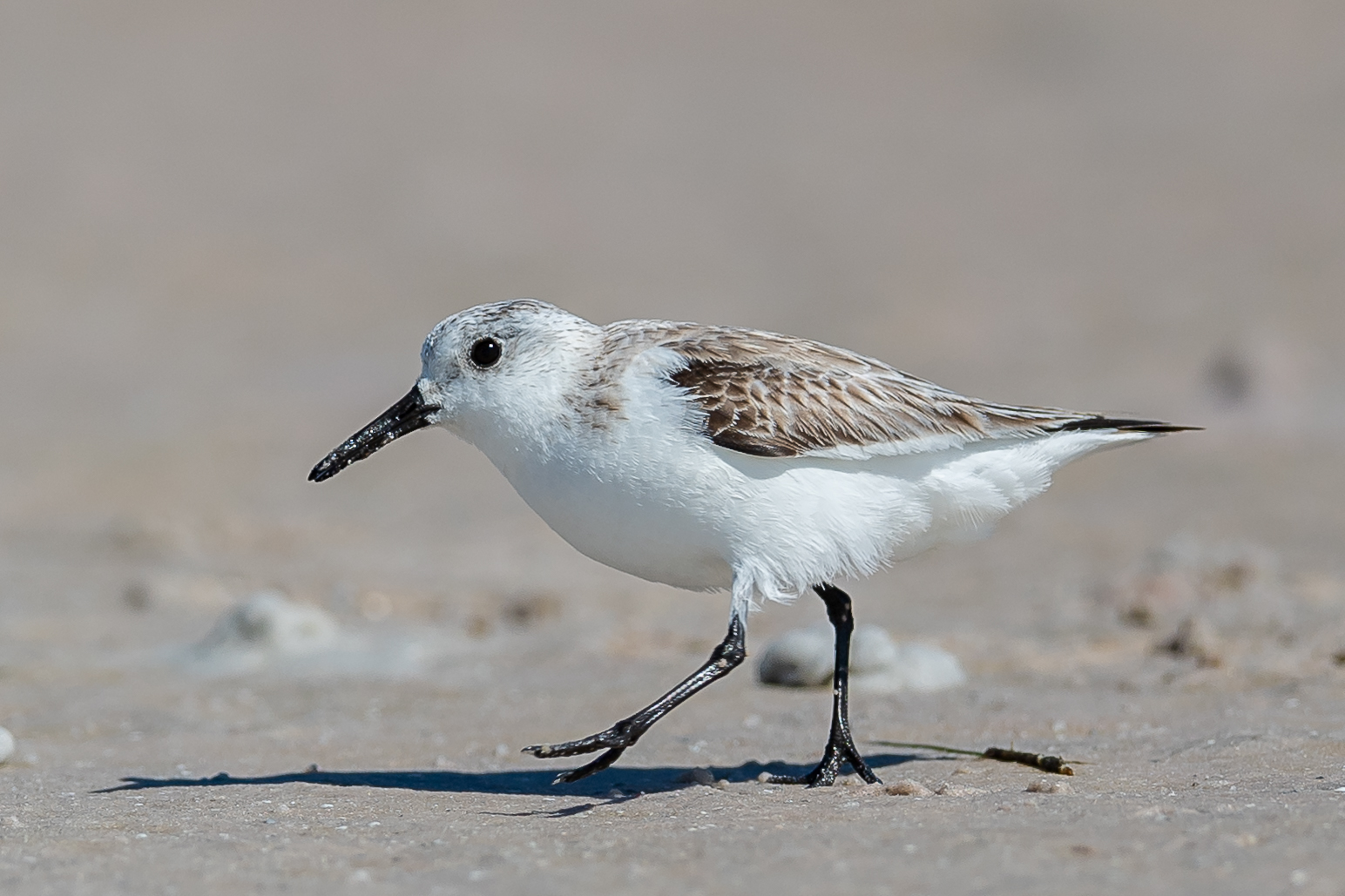
Our attention was then drawn to a nearby tree, where an Osprey perched majestically with finishing its recent catch. The serene scene was soon interrupted by a feisty Mockingbird, which, despite its smaller size, boldly harassed the raptor, showcasing the audacious nature of these territorial songbirds.
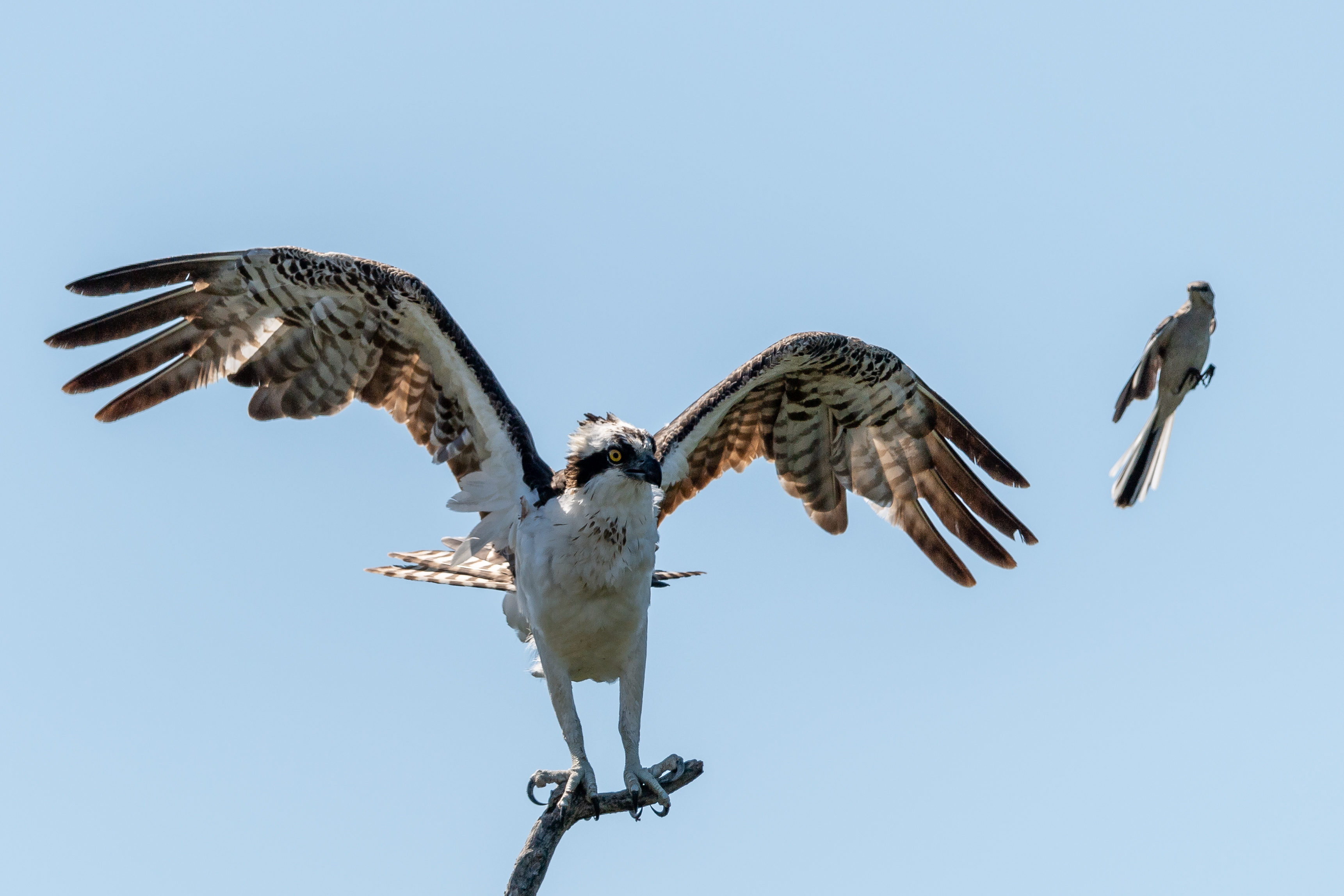
The day's observations culminated with the sighting of a Lesser Crested Tern elegantly diving into the surf and emerging with a fish clasped in its beak—a testament to the rich feeding grounds that Fort De Soto Park provides for seabirds.
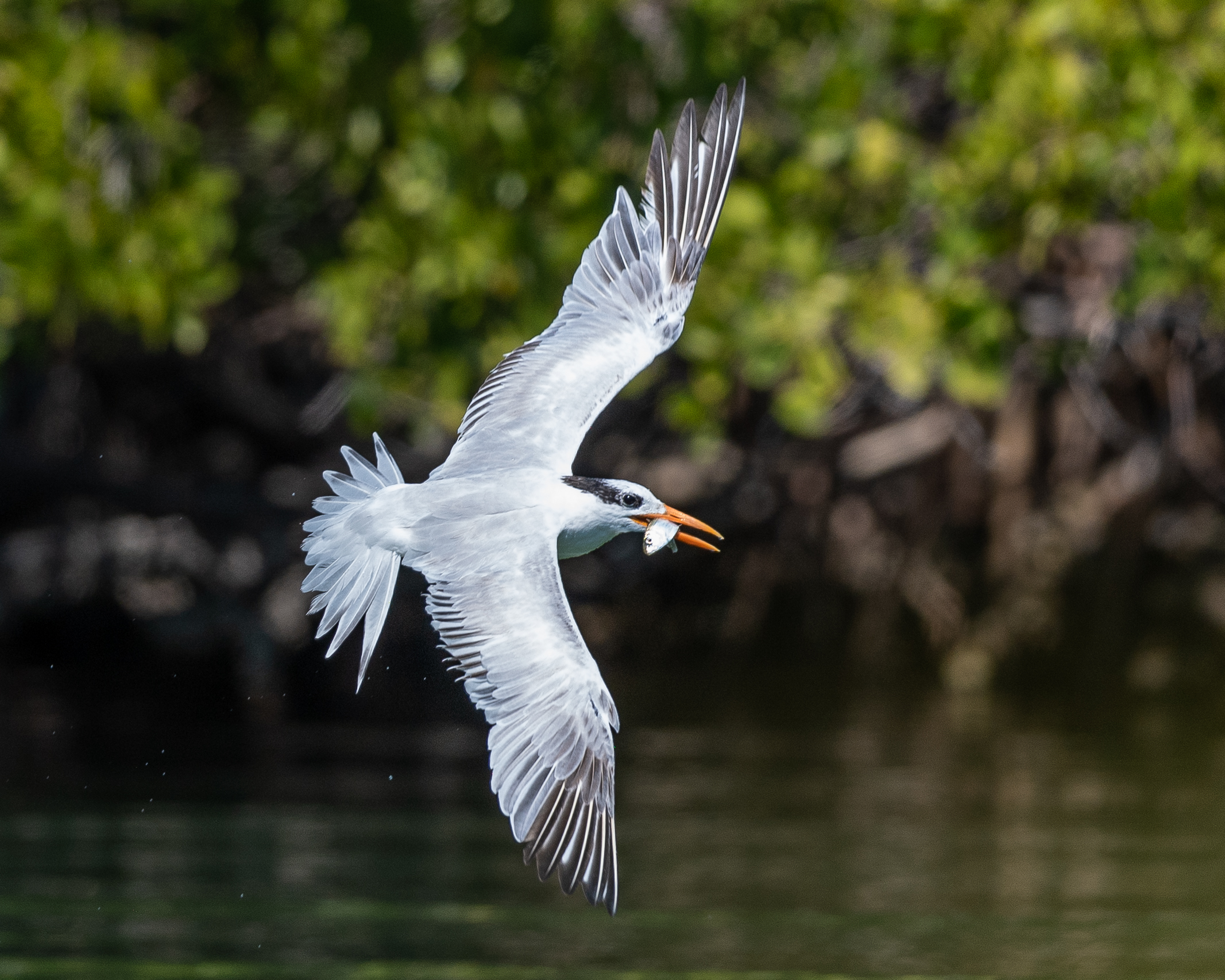
As we observed these shorebirds, an unexpected aerial display unfolded—a flock of parakeets, likely Black-hooded Parakeets, known to inhabit the Tampa area, soared above us. Their vibrant green plumage and distinctive calls added an exotic touch to the Floridian landscape. These parakeets, originally native to South America, have established populations in Florida, particularly around Tampa.
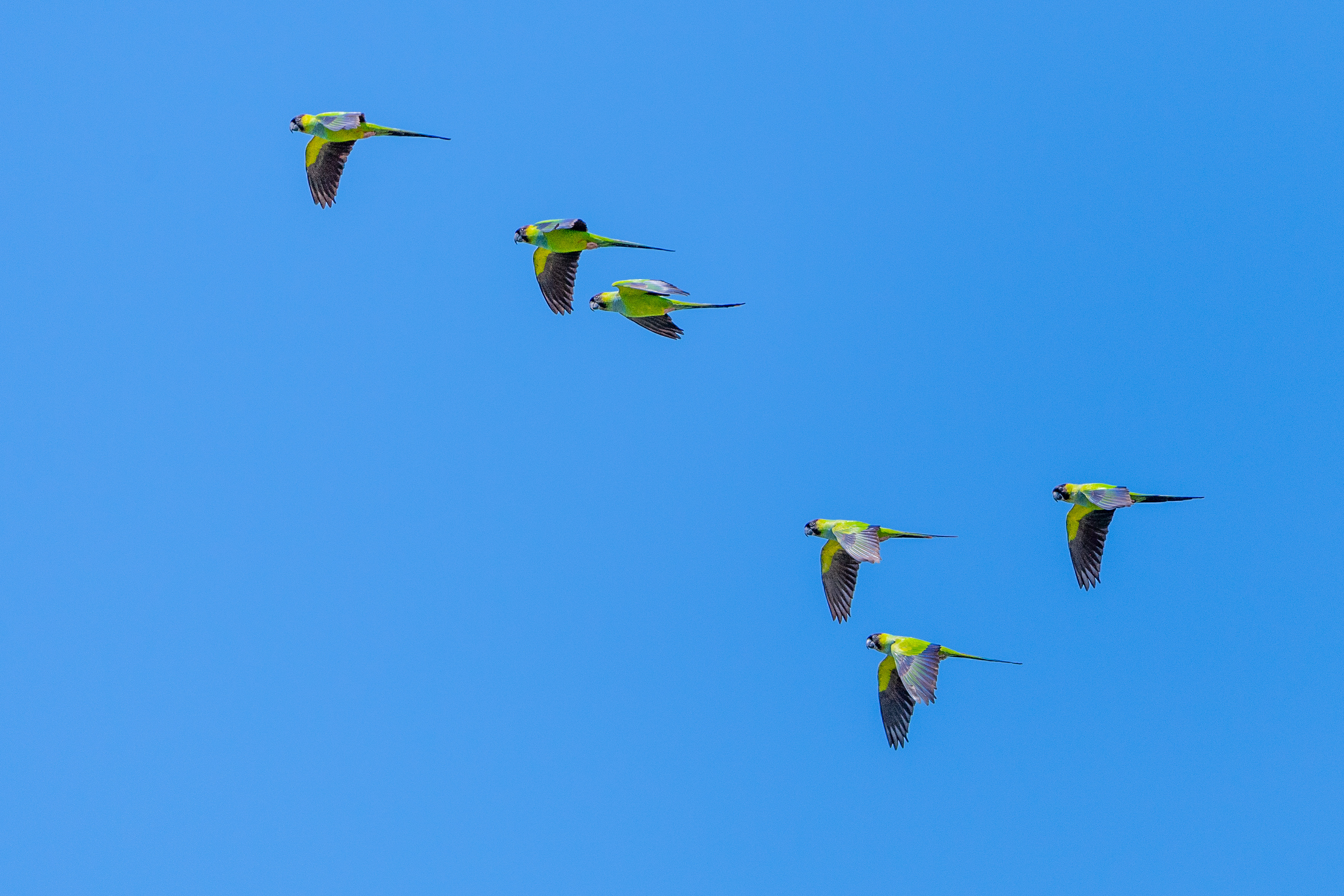
While in the Tampa area, a friend mentioned that a pair of Great Horned Owls had nested in Philippe Park near Safety Harbor the previous year and might still be using the nest. Eager to observe these magnificent creatures, we visited the park in the late afternoon, just before sunset. To our delight, we spotted one of the owls perched near the nesting area, providing an excellent opportunity for photography. A fellow photographer informed us that, sadly, the owlets had died earlier in the season from unknown causes. This tragic news underscored the challenges wildlife face, including threats like secondary poisoning from rodenticides, which had affected owl populations in the park in previous years.
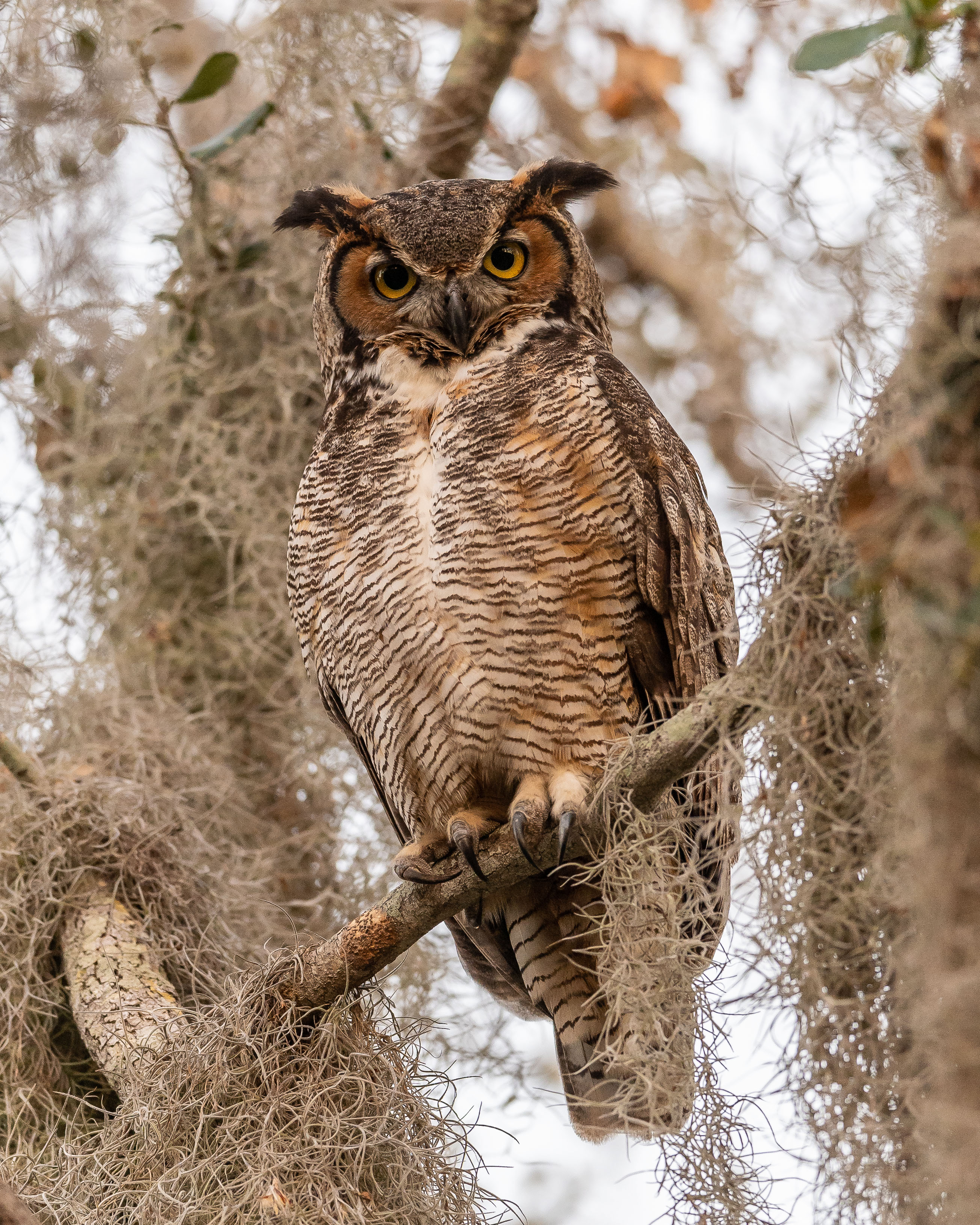
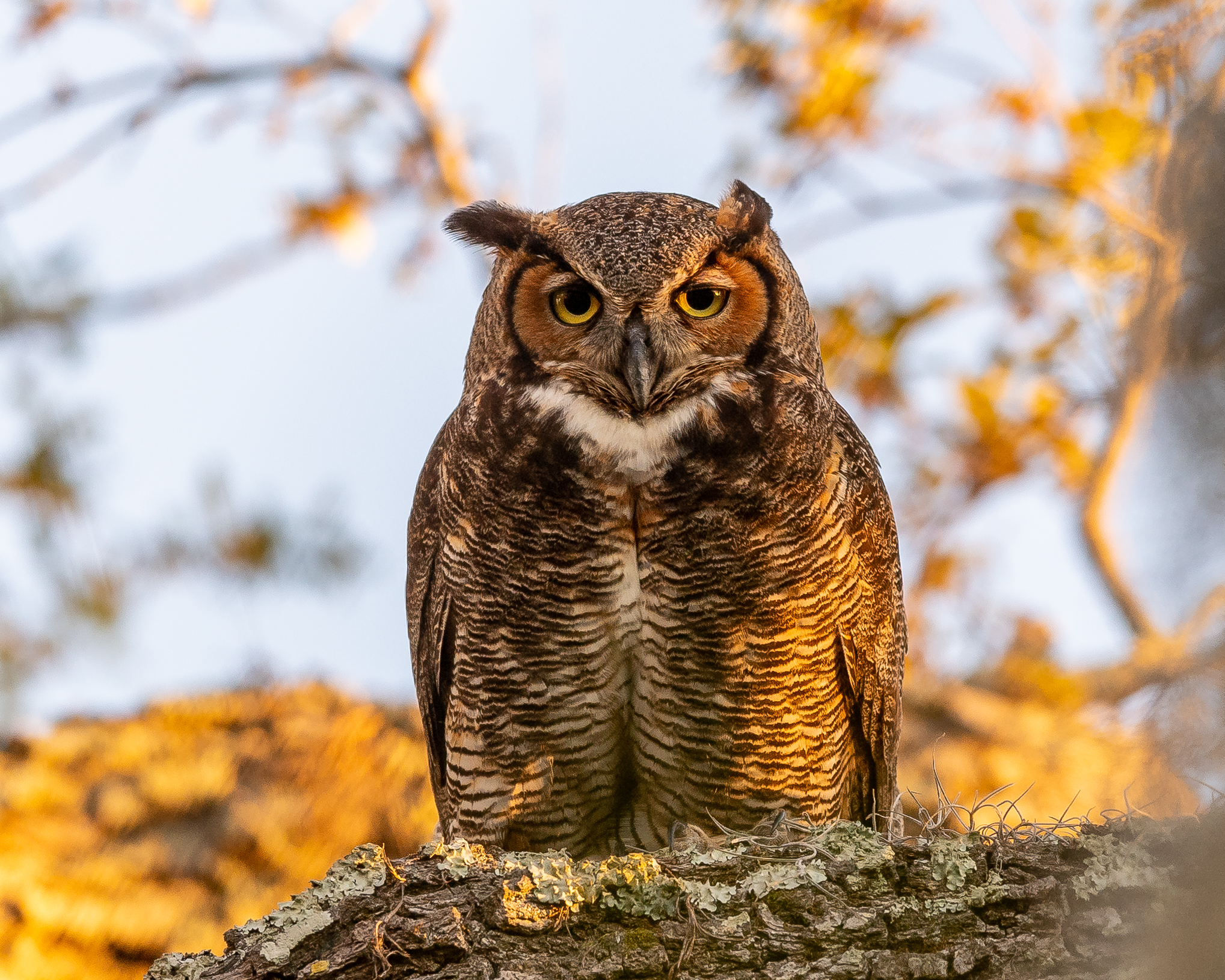
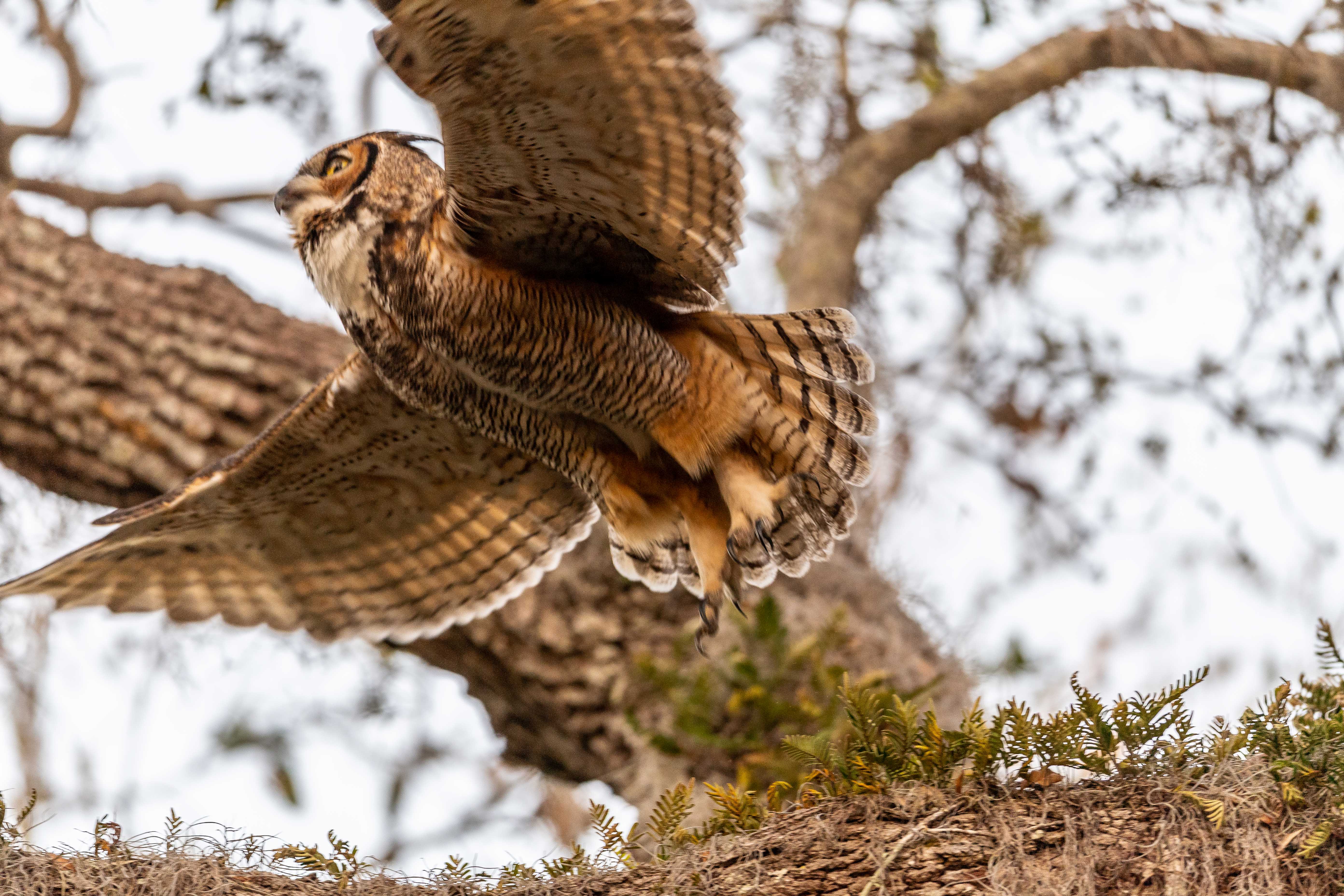
While searching for the owls, we were treated to the sight of a pair of Pileated Woodpeckers foraging around a large tree and on the ground. These striking birds, with their vibrant red crests and distinctive calls, were captivating subjects for our cameras. Philippe Park's diverse habitats provided a rich environment for observing such remarkable avian behavior.
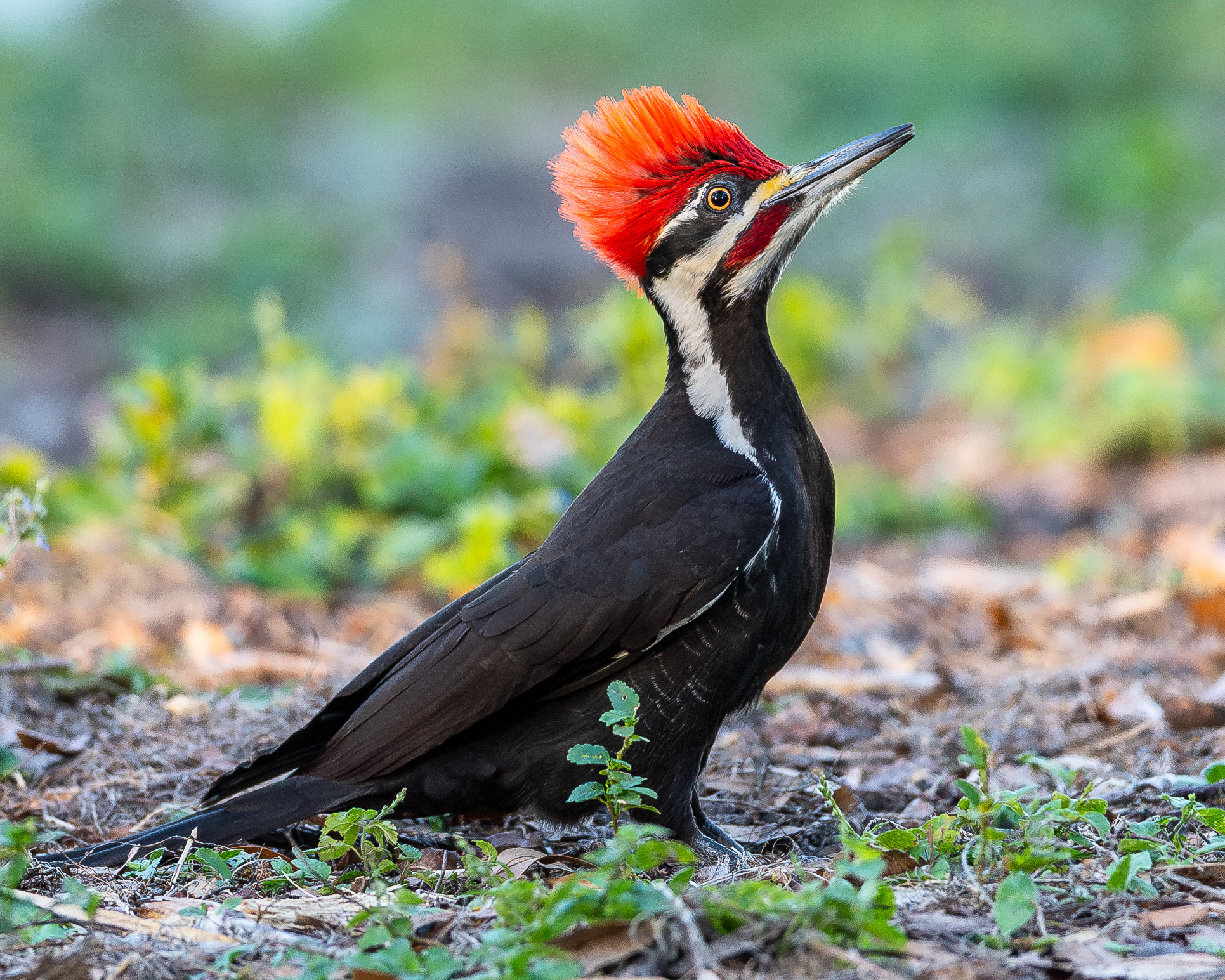
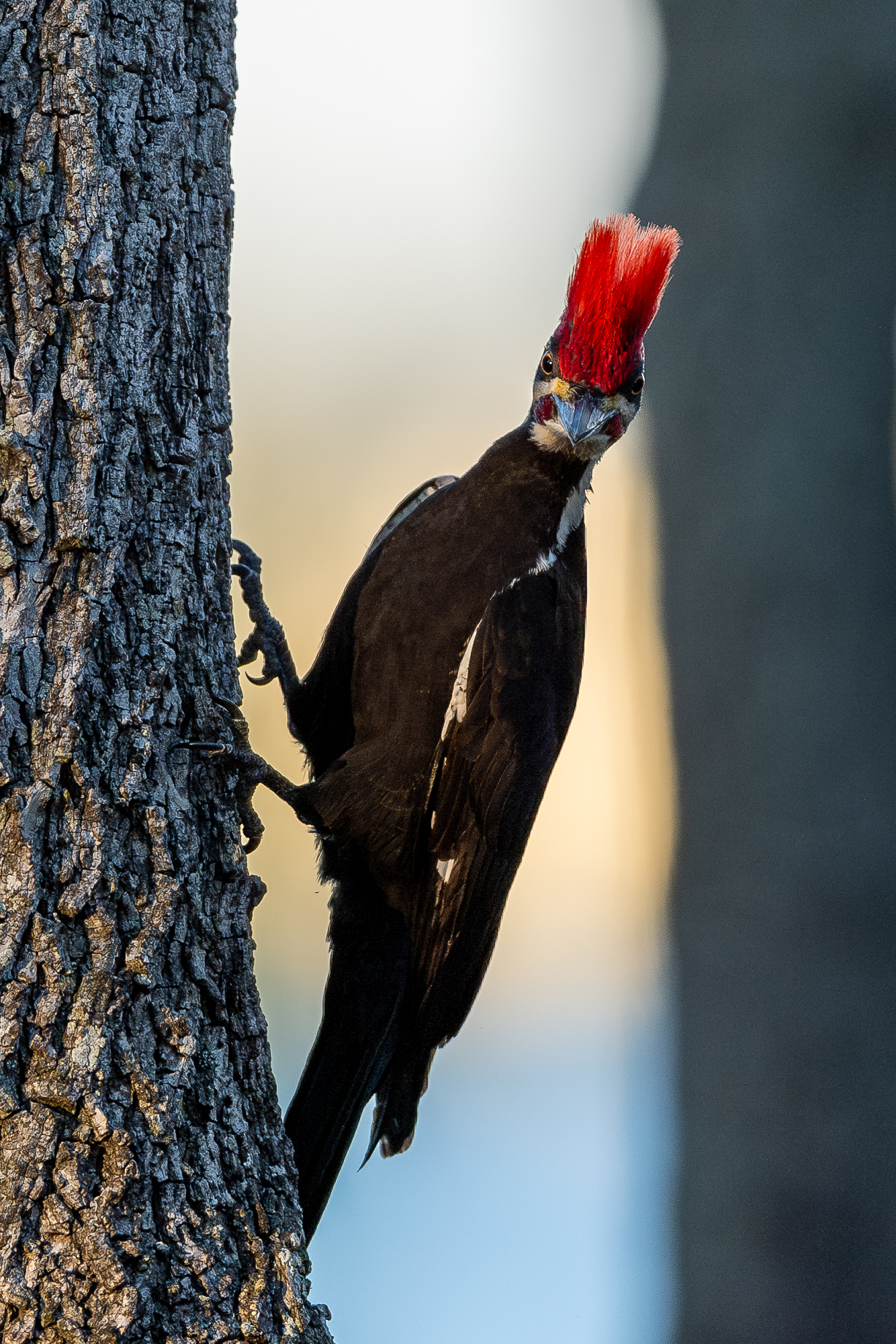
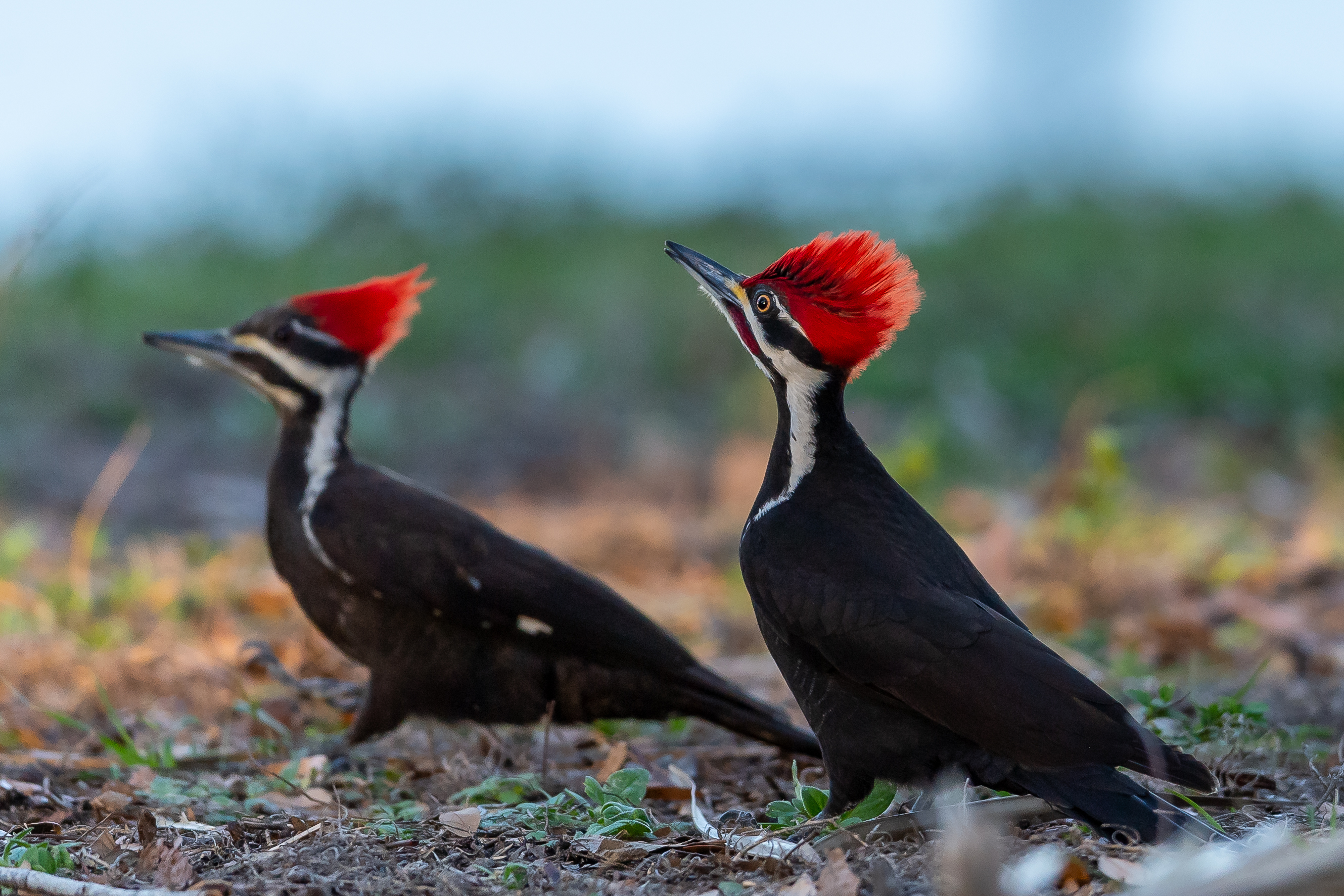
This unexpected detour enriched our birding adventure, offering intimate glimpses into the lives of some of Florida's most fascinating bird species.
Reflections on Our Journey
This trip was more than just a photography expedition; it was a bonding experience that deepened our appreciation for nature's wonders. Sharing these moments with my daughter and my wife, witnessing their excitement with each bird sighting, was truly priceless. Both Magnolia Plantation and Gardens and Fort De Soto Park offered unique experiences, each showcasing the beauty and diversity of birdlife in their distinct environments.
For fellow bird enthusiasts and photographers, these destinations are a treasure trove waiting to be explored. Whether you're aiming to capture the elegance of a Great Egret in flight or the vibrant hues of a Roseate Spoonbill, the opportunities are boundless. And if you're planning a trip, consider timing it during the spring breeding season to witness nature's splendor at its peak.
In conclusion, our spring break journey was a testament to the joys of exploration, the beauty of avian wildlife, and the enduring bonds forged through shared experiences in nature.
